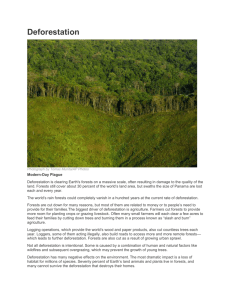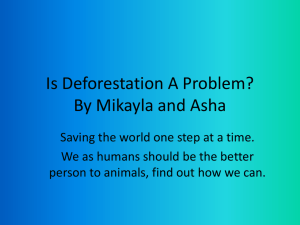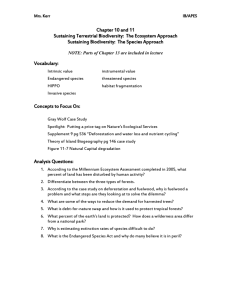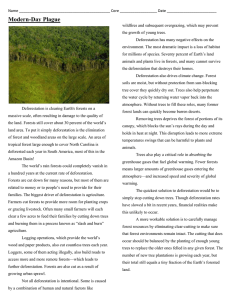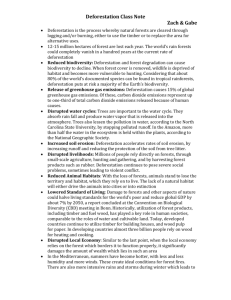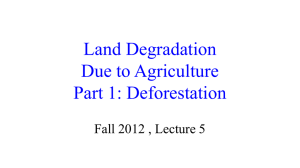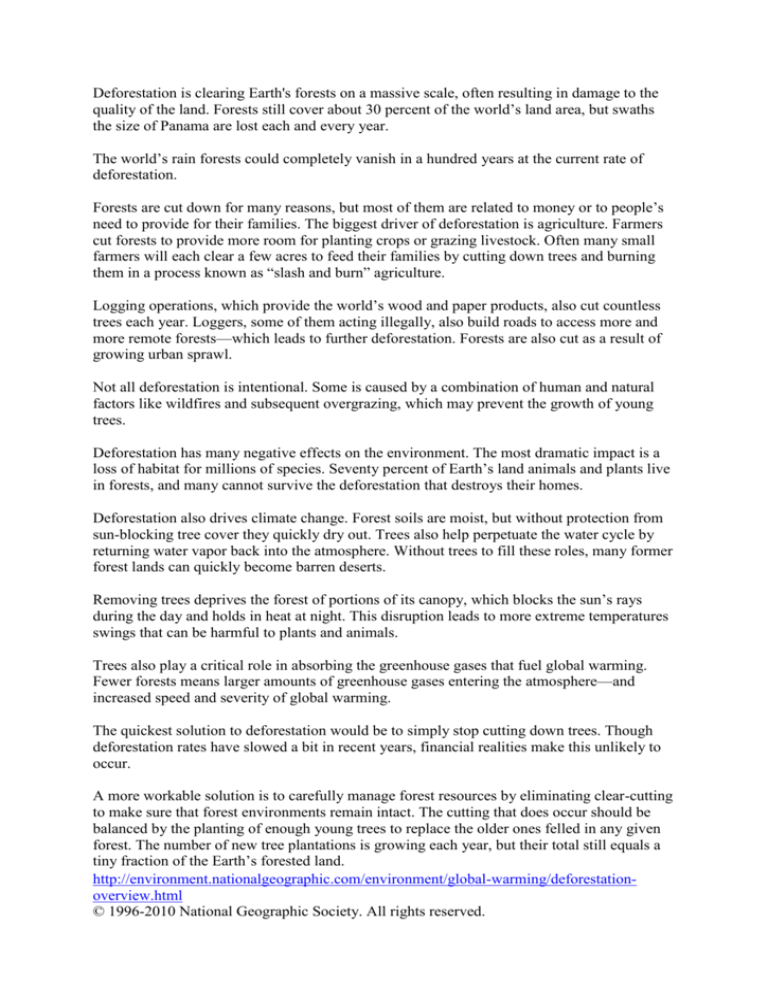
Deforestation is clearing Earth's forests on a massive scale, often resulting in damage to the
quality of the land. Forests still cover about 30 percent of the world’s land area, but swaths
the size of Panama are lost each and every year.
The world’s rain forests could completely vanish in a hundred years at the current rate of
deforestation.
Forests are cut down for many reasons, but most of them are related to money or to people’s
need to provide for their families. The biggest driver of deforestation is agriculture. Farmers
cut forests to provide more room for planting crops or grazing livestock. Often many small
farmers will each clear a few acres to feed their families by cutting down trees and burning
them in a process known as “slash and burn” agriculture.
Logging operations, which provide the world’s wood and paper products, also cut countless
trees each year. Loggers, some of them acting illegally, also build roads to access more and
more remote forests—which leads to further deforestation. Forests are also cut as a result of
growing urban sprawl.
Not all deforestation is intentional. Some is caused by a combination of human and natural
factors like wildfires and subsequent overgrazing, which may prevent the growth of young
trees.
Deforestation has many negative effects on the environment. The most dramatic impact is a
loss of habitat for millions of species. Seventy percent of Earth’s land animals and plants live
in forests, and many cannot survive the deforestation that destroys their homes.
Deforestation also drives climate change. Forest soils are moist, but without protection from
sun-blocking tree cover they quickly dry out. Trees also help perpetuate the water cycle by
returning water vapor back into the atmosphere. Without trees to fill these roles, many former
forest lands can quickly become barren deserts.
Removing trees deprives the forest of portions of its canopy, which blocks the sun’s rays
during the day and holds in heat at night. This disruption leads to more extreme temperatures
swings that can be harmful to plants and animals.
Trees also play a critical role in absorbing the greenhouse gases that fuel global warming.
Fewer forests means larger amounts of greenhouse gases entering the atmosphere—and
increased speed and severity of global warming.
The quickest solution to deforestation would be to simply stop cutting down trees. Though
deforestation rates have slowed a bit in recent years, financial realities make this unlikely to
occur.
A more workable solution is to carefully manage forest resources by eliminating clear-cutting
to make sure that forest environments remain intact. The cutting that does occur should be
balanced by the planting of enough young trees to replace the older ones felled in any given
forest. The number of new tree plantations is growing each year, but their total still equals a
tiny fraction of the Earth’s forested land.
http://environment.nationalgeographic.com/environment/global-warming/deforestationoverview.html
© 1996-2010 National Geographic Society. All rights reserved.
Figure 1 Deforestation in rainforest
http://environment.nationalgeographic.com/environment/global-warming/deforestationoverview.html
© 1996-2010 National Geographic Society. All rights reserved.



